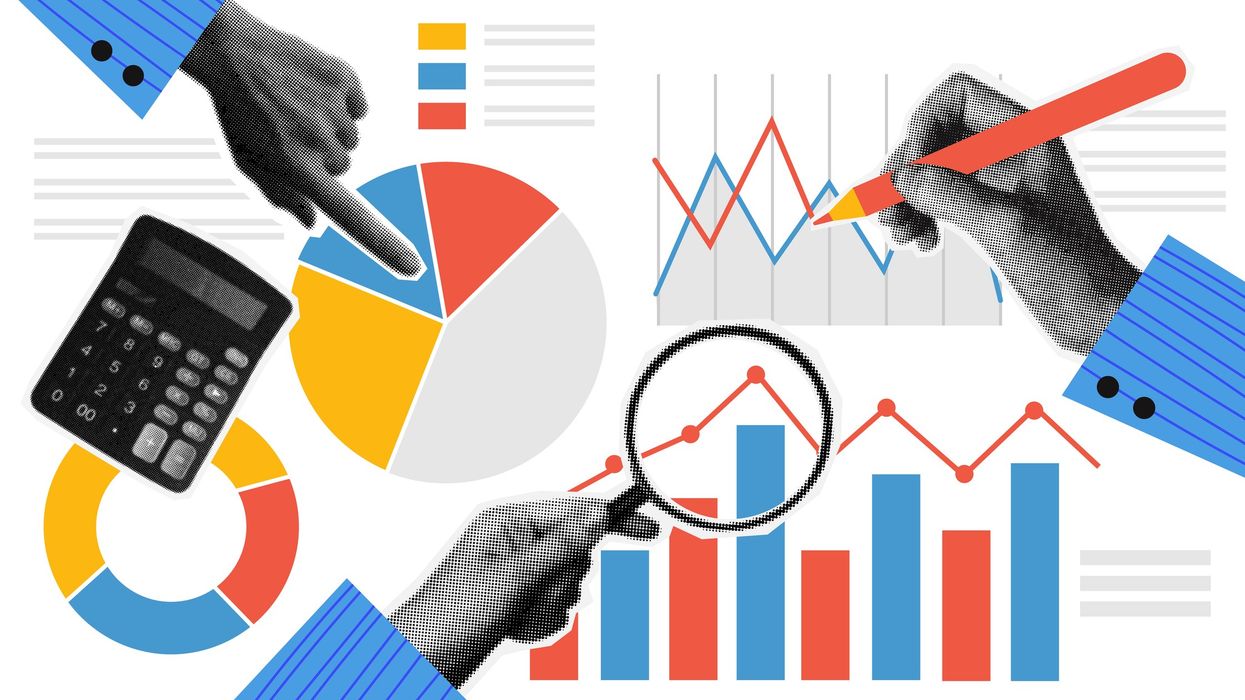Produced in association with UK Government
Companies emphasise strict safety and social distancing measures to reassure returning employees as offices and businesses reopen
FROM construction sites to councils and retailers to industries, Britain is gradually getting back to work after more than two months of lockdown owing to the coronavirus pandemic.
Since the middle of May, those working in construction, manufacturing and other manual jobs have been encouraged to return to work, while those able to work from home have been advised to continue to do so.
In London, the business district of Canary Wharf, with its distinctive skyscrapers, prepared to welcome back bankers, traders and accountants to their offices in tall building blocks, with social distancing protocols, limits on elevator use and staggered working hours.
Among measures being implemented are intense deep cleaning focusing on the points that people touch, such as handles and buttons; oneway walking routes and entrances; and additional transport options.
“We expect quite a few businesses to bring in up to 10 per cent of their staff – that is 12,500 people back to work,” said Howard Dawber, managing director of strategy at Canary Wharf.
“That is quite a lot of people to manage but we can [do it], right up into people’s offices, enforce that social distancing two-metre rule.”
Changing desk layouts to have “checkerboard” patterns, sensor-operated doors and dedicated staff to enforce social distancing on lifts – including pressing the button – are also being adopted in order to make workers feel safe and reassured.
The Wharf has 16 million square feet (1.49 million square metres) of net office space, with another million square feet under construction, and 1.5 million square feet of retail space.
Canary Wharf has also put on extra parking spaces and provided more bicycle racks, while river buses are set to increase their capacity to up to 5,000 people an hour at peak times.
Smaller businesses have also geared up to resume operations, while adhering to government advice on tackling coronavirus.
Pret A Manger has reopened more than 100 shops, with safety and social distancing measures to protect its employees and customers, since some lockdown restrictions were eased.
Pret’s UK managing director Clare Clough said: “On April 16, we initially reopened 10 shops in London, to help give frontline healthcare workers better access to freshly prepared food while also getting our supply chain up and running again to deliver food to those who need it most. This was followed by a further 20 shops a week later, all for
takeaway and delivery only.
“This gradual process has helped us reach a point where we now have 100 shops open across the country, in line with government guidance.”
Similar to supermarkets and other big shops, Perspex screens have been fitted at the tills and customers are encouraged to pay by card.
Clough added: “We’ve introduced operational changes in our kitchens – including a nominated ‘kitchen runner’, who gets the products needed for each team member doing food preparation – to minimise the amount of movement in the kitchen.
“There are limited benches for food preparation, all spaced apart, while other restrictions are in place which allow only one person in certain areas of the kitchen at any one time.”
Britain’s rail network is also introducing new measures to ensure social distancing and prevent crowding. Train operators have put in place oneway systems at stations, floor markings, more security staff for crowd control as well as taping off some seats and new cleaning measures to make sure services are safe to use during the pandemic.
Peter Hendy, chairman of Network Rail, said most passengers were following social distancing rules. “Our passengers are reasonable and rational. I think people understand they don’t want to be too close to people,” he said.
Some train operators, such as LNER, which operates routes between London, Newcastle and Edinburgh, have introduced reservation-only travel so that the number of passengers on trains can be controlled. They advise that two rows are left vacant between passengers.
Last week, the first Range Rover made under new social distancing measures, drove off the production line at the Jaguar Land Rover (JLR) manufacturing plant in Solihull.
The luxury carmaker said hygiene and health monitoring measures were in place following an review of all production lines, engineering facilities, office areas and communal spaces as the company launched a phased return to manufacturing.
“Seeing the first Range Rover come off our line is a defining moment for Jaguar Land Rover, for all of us who work for the company and the many businesses in our supply chain,” said Grant McPherson, JLR executive director (manufacturing). “It marks the end of our temporary shutdown and signals the beginning of a return to normality. But, of course, this is a new normal.”
Employees were asked to complete an online clinical questionnaire and sign up to a health and well-being charter before returning to work. They have also been told to monitor their temperature at home before each shift.
JLR’s chief medical officer, Dr Steve Iley, said: “We have developed the most effective protocol and guidelines so that our people feel reassured about coming back to the workplace.”
Manufacturing is set to resume at JLR’s Halewood facility in northwest England next Monday (8), and the company said “small pockets of business-critical activity” are taking place at its Castle Bromwich facility in the Midlands.
Luxury carmaker Aston Martin Lagonda has also introduced safety guidelines to protect its employees and ensure they feel confident about returning to work at its St Athan site.
James Stephens, the director of government and external affairs at Aston Martin, said: “We developed our return to work guidelines by following Public Health Executive (PHE) and Health and Safety Executive (HSE) guidelines, as well as consulting with our trade union.
“The health and safety of our employees always comes first, so using the guidance available we have been able to implement a range of safer working practices that our staff returning to work need to adhere to.”
Aston Martin employs 3,000 people across eight sites in the Midlands and south Wales.
Among its measures, the carmaker has provided PPE (personal protective equipment), with masks to be worn at all times; increased cleaning frequency in all areas and across all sites; introduced staggered start and finish times as well as break times; and put up posters to remind employees of social distancing and hand-washing.
Popular fast food chain McDonald’s UK is also open for business.
McDonald’s, which has more than 1,450 restaurants across the UK and Ireland and employs more than 135,000 people, initially reopened 15 restaurants for delivery only. From May 20, it moved to the next phase of its reopening plan, with a further 30 pilot restaurants in the UK and Ireland, offering service through the drive-thru
lane. It hopes to have all its drive-thru facilities open by early June.
“We are asking all our employees to adapt to how our restaurants now work and will only reopen at a pace that enables them to work safely,” said Paul Pomroy, McDonald’s CEO for the UK and Ireland.
Safety measures implemented by the group include the use of contactless thermometers, with employee temperatures checked on arrival at work; Perspex screens in key locations in the kitchen and service areas; and use of protective equipment, including gloves and face coverings.
Meanwhile, wholesaler Bestway has put social distancing efforts in place across all its depots, including preventing those under the age of 16 from entering its premises, reducing the number of people in a depot at any one time, and marking areas of two-metre distances. Some depots are also closing early to allow teams the time to replenish stocks and keep up supply.
Keyworkers have played a vital role in the pandemic and a Birmingham-based company has been doing its bit to help emergency engineers.
CHH Conex Ltd is a manufacturing and supply firm which produces cable assemblies, integrates electronics into enclosures and supplies engineering components and tooling.
It focused on distributing PPE for emergency engineers during the pandemic. Tim Hughes, managing director at CHH Conex, said the company followed government advice and used clear communication with staff.
The firm implemented social distancing within the building, minimising people’s movement between areas, and promoted regular hand-washing at locations around the site. In addition, vulnerable team members were identified and shielded, and offsite and visitor meetings were changed to virtual video meetings or phone calls.
Hughes said, “This approach is working for us. Some of the new processes have been so effective that we will adopt them going forward, but we are taking nothing for granted.”
Independent shops too have made provisions to keep staff and customers safe.
One independent retailer in Southampton teamed up with a local taxi company to offer home delivery services to customers during the lockdown. Tanj Jagpal, whose parents run the Nisa Local Maybush store, said they made the decision to close their doors early amid concerns about how to keep store staff and shoppers safe.
However, conscious of the need to continue providing a service to the community, Jagpal spent time working on a new system to offer shoppers access to product lists via the store’s Facebook page, and allowing them to place orders before 10pm for next-day delivery.
The shop also offered a click-and-collect service using the same system, with customers able to pick up their shopping at the store. A full list of available products was uploaded every day, and customers were invited to place their orders, including at least £10 worth of essential items, on the store’s Facebook page.
Jagpal said: “We felt this was the most responsible way to operate so customers didn’t have to put themselves or others at risk by waiting in queues or being in close contact with others. In addition, they knew exactly what we had available, as the product list was updated daily.”
Disclaimer: “This advertorial relates to returning to work in England. You should confirm with your employer the steps it is taking regarding returning to work.”


















